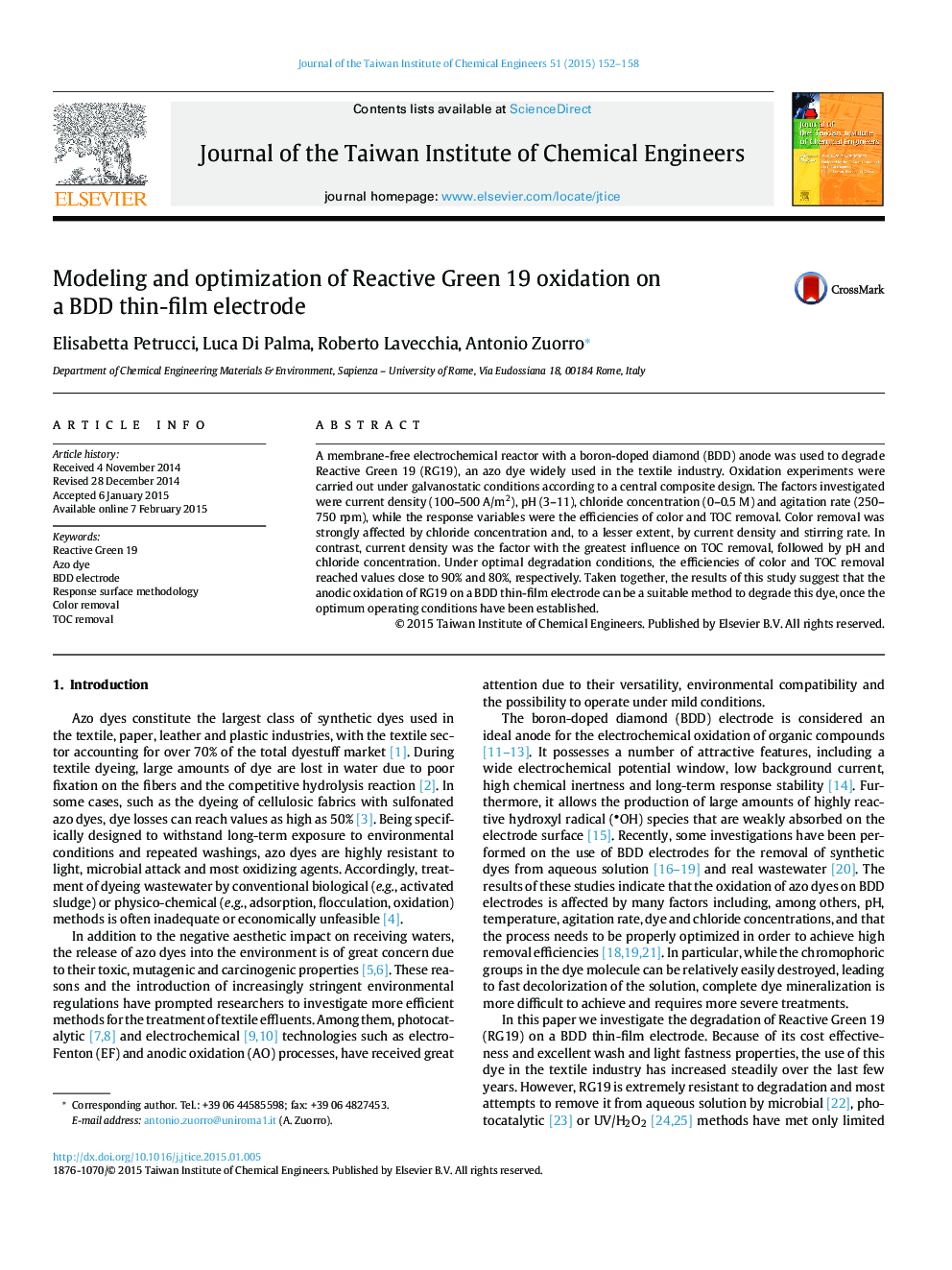| کد مقاله | کد نشریه | سال انتشار | مقاله انگلیسی | نسخه تمام متن |
|---|---|---|---|---|
| 690782 | 1460423 | 2015 | 7 صفحه PDF | دانلود رایگان |

• Reactive Green 19 was successfully degraded on a BDD thin-film electrode.
• Process variables exhibited different effects on color and TOC removal.
• Statistical models for color and TOC removal efficiencies were developed.
• Under optimum conditions total color and extensive TOC removals were achieved.
A membrane-free electrochemical reactor with a boron-doped diamond (BDD) anode was used to degrade Reactive Green 19 (RG19), an azo dye widely used in the textile industry. Oxidation experiments were carried out under galvanostatic conditions according to a central composite design. The factors investigated were current density (100–500 A/m2), pH (3–11), chloride concentration (0–0.5 M) and agitation rate (250–750 rpm), while the response variables were the efficiencies of color and TOC removal. Color removal was strongly affected by chloride concentration and, to a lesser extent, by current density and stirring rate. In contrast, current density was the factor with the greatest influence on TOC removal, followed by pH and chloride concentration. Under optimal degradation conditions, the efficiencies of color and TOC removal reached values close to 90% and 80%, respectively. Taken together, the results of this study suggest that the anodic oxidation of RG19 on a BDD thin-film electrode can be a suitable method to degrade this dye, once the optimum operating conditions have been established.
Journal: Journal of the Taiwan Institute of Chemical Engineers - Volume 51, June 2015, Pages 152–158